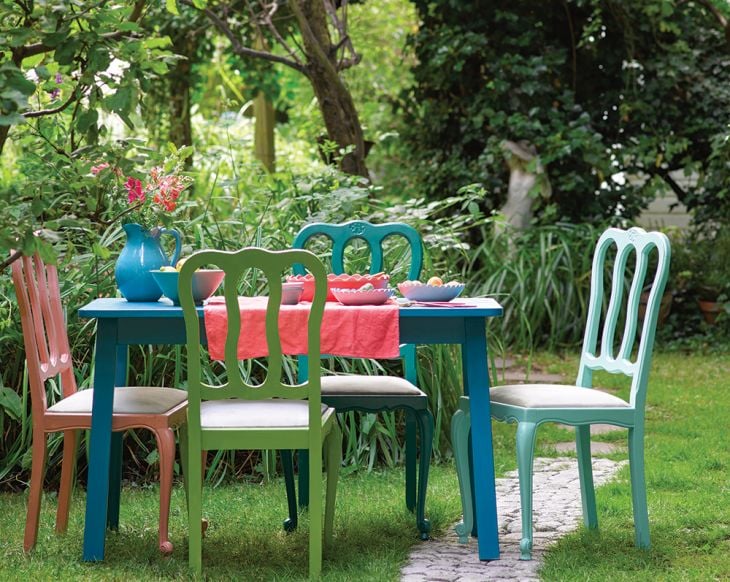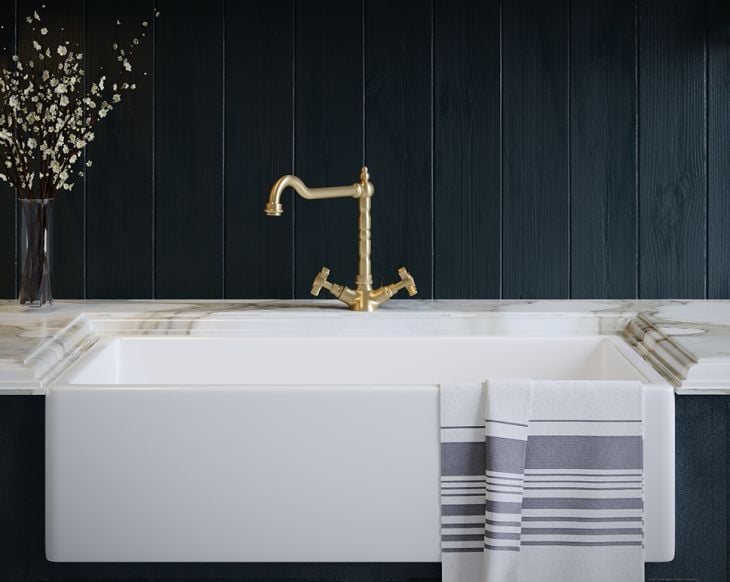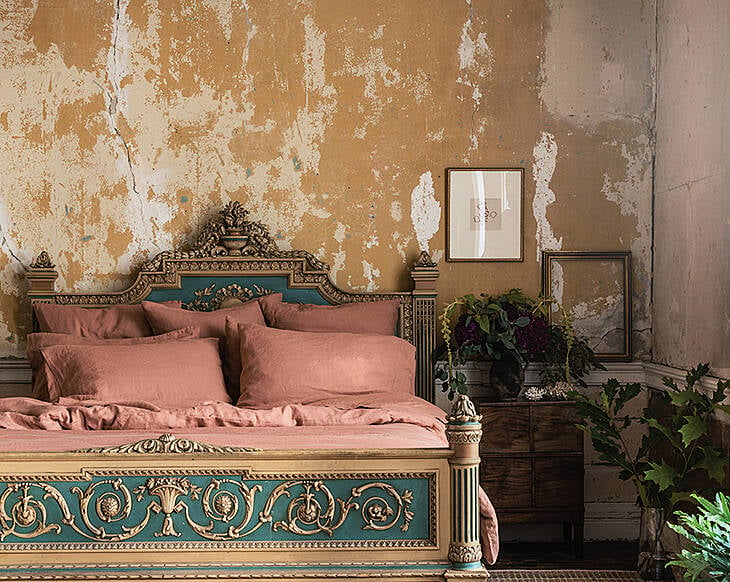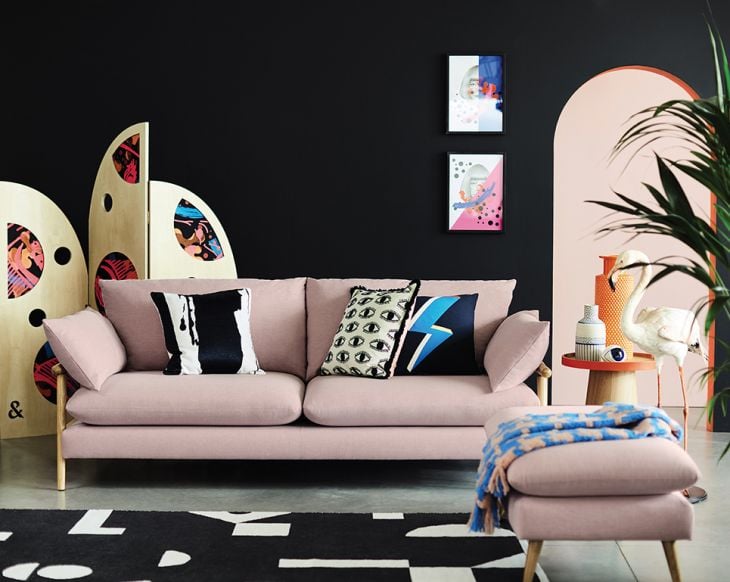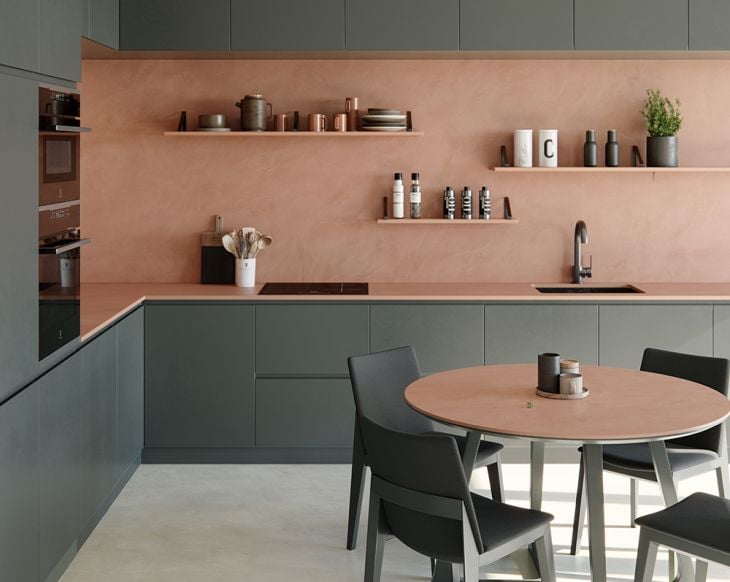Can the same ethics and ideas apply to interior design as they do to ‘slow fashion’? We think so. We’re calling the end of fast interiors, and the rise of slow interiors. Eleanor Flegg focusses on the big investment buys that will last a lifetime and rid us of throw-away society.
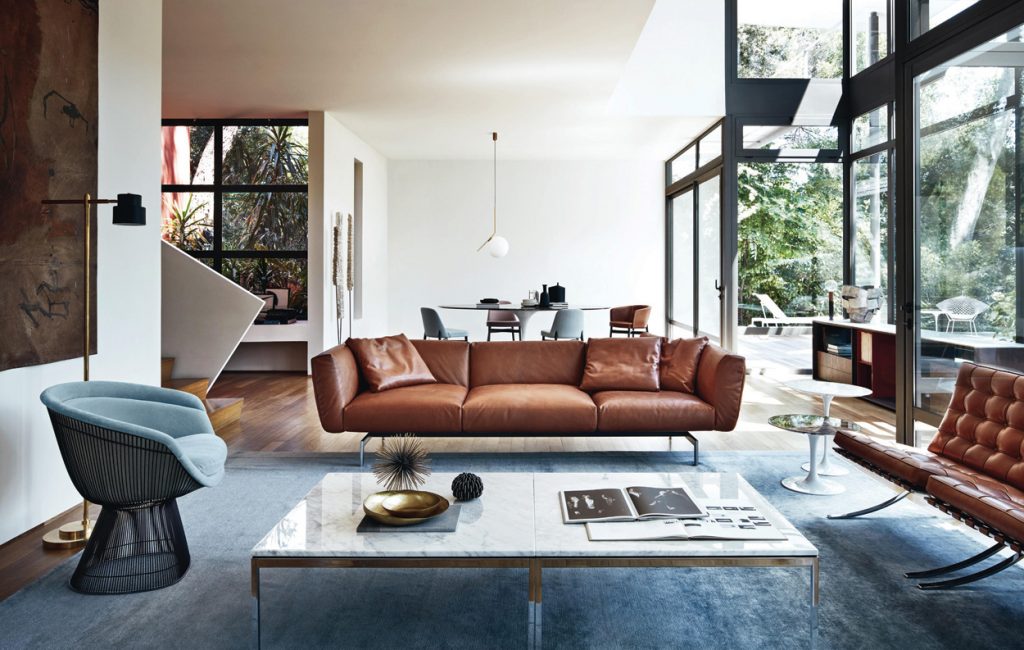
There’s no doubt that we’ve been seeing an increased emphasis on ethically sourced food and the end of ‘fast fashion’. With this overall awareness of how we’re impacting the planet, it’s a no-brainer that it’s time to ramp up efforts when it comes to interiors. It’s not news that fashion and interiors are closely related. The looks we spot on the catwalks don’t take long to venture into high street interiors stores.
At minimal cost, and with a tendency to be disposed of within a few months, quick-fix items are not exactly a nod to sustainable living. While we’re not saying we should steer clear of that must-have hue or material – we’ll always love switching and updating our spaces – there’s no harm in making sure our purchases are well-considered. If you’re one for keeping up with trends, then that cushion you bought three years ago should still be in good nick. Bring it out when a suitable trend rolls around.
As for big ticket buys, a certain amount of thought is needed. Style and comfort will always play their parts. Throwing the slow interiors movement in the mix? Then, the materials used, where the piece is travelling from and longevity play their parts, as well.
TABLE TALK

Buy a dining table that will last; remember that some can take a pounding. There’s no point in investing in a piece with a delicate surface if it’s going into the home of hard knocks. Then there’s the trickier conundrum that some designs look dated after a few years; a nightmare for the trend conscious. If in doubt, choose a design that’s a real classic with an instantly recognisable designer behind it. A table designed by a known mid-century designer is a pretty safe bet. If it hasn’t dated by now, it’s not going to. See the graceful rosewood table attributed to Carlo de Carli, currently for sale at Acquired.ie. Much of its beauty is in the rosewood table top. Just keep in mind that it would need a bit of TLC to hold its value.
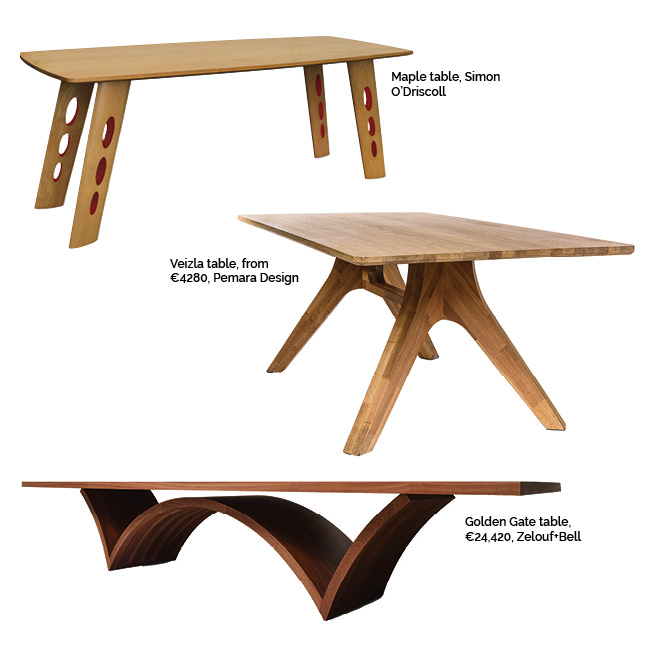
If supporting Irish design is important to you, consider an understated contemporary classic like Simon O’Driscoll’s 1996 Maple table or a prize-winning design like the Veizla table from Pemara Design. Either of these can be repaired easily if they get a scratch, so they certainly won’t be a need to be replaced.
SUPER SEATING
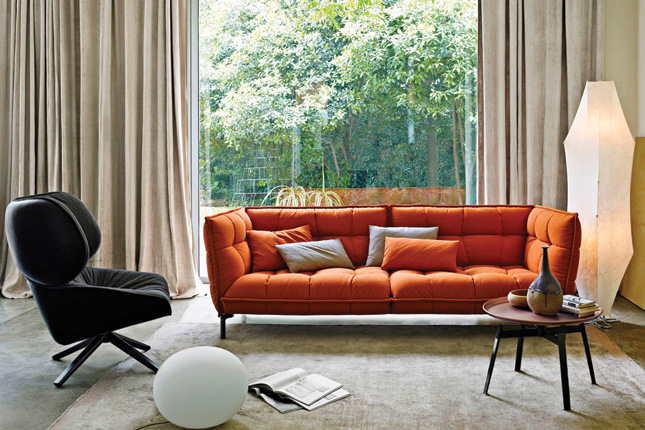
When it comes to sofas, it’s what’s inside that counts. On a purely visual level, a cheap sofa can be designed to resemble an expensive one. It may even be comfortable to sit on – for now – but a few years down the line, you’ll certainly feel the difference. The longevity of a sofa, and therefore its investment value, is in its materials and construction, as well as the design. The best quality sofas will repay you in terms of years of service, but find a retailer that you can trust and interrogate them thoroughly.
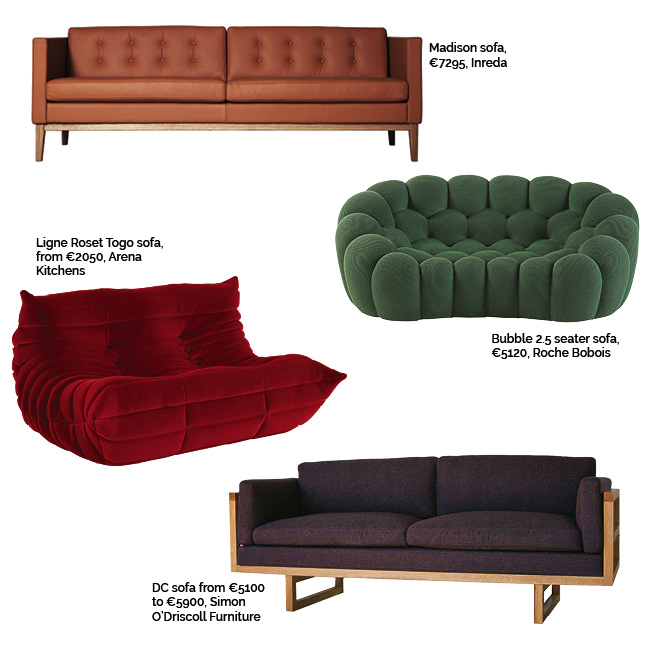
Once you’re happy that the foundations are solid, then it’s down to style. Trending low-lying sofas include the cloud-like Bubble sofa from Roche Bobois. Similarly, the Ligne Roset Togo sofa looks like a cushion that’s found its spine. But how easy is it going to be to haul yourself to your feet? Low lying pieces are great for the children in the house but keep in mind that elderly family members may be more comfortable on an upright sofa. Those who prefer a classic model might be drawn to Leila Atlassi’s Madison sofa from Inreda. If that’s too prim, the B&B Italia Husk sofa from Minima is designed in reverse. Its structure, is created by the softer, flexible parts. More importantly, the Husk was designed by Patricia Urquiola, who has a superb understanding of comfort. And that, at the end of the day, is what you want from a sofa that you aim to live with for a long time.
TRUSTY STORAGE

A sideboard or cabinet is also a safe bet, when you’re looking for long-lasting investment. Because they live quietly against the wall and don’t see as much traffic as a dining table or a sofa, there’s less risk of damage. Commissioning a piece from an Irish designer/maker can give you an exquisitely crafted piece that combines the qualities of sculpture and furniture. A version of John Lee’s quietly majestic Sliabh, hand-carved in solid oak, is a good choice. Each one is made to commission, so the design can be modified to fit in with your house.
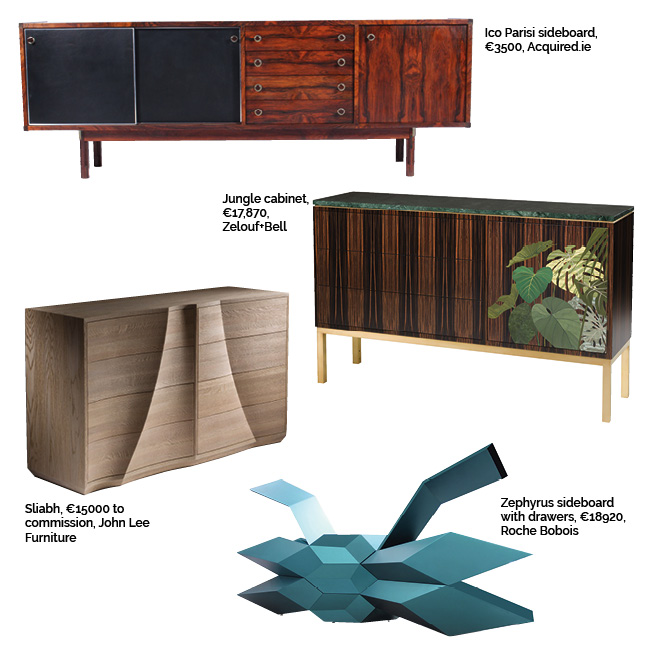
If you’re more about the marquetry, the luxurious Jungle cabinet from Zelouf+Bell has bags of character and a bold jungle leaf pattern set against graphic Makassar ebony. It’s one of an edition of six. The made-for-investment Roche Bobois Zephyrus is one of a limited edition of 55 signed and numbered units. The doors open in a way that was inspired by butterfly wings (although it also resembles a 1980s deLorean sports car). You can pay anything from €6,620 to €18,840 for the geometric Emmemobli – Arlequin C from Minima. That’s because, like a lot of furniture in this price bracket, the manufacturers can create different variants based on the finish of triangles on doors. Like commissioning a piece of furniture, this will involve some waiting. But that’s part of the fun.
LONG-LIVING LIGHTS

If you’re new to the notion of investing in furniture, lighting is a good place to start. A decent quality, well designed light fitting is generally much cheaper than, say, a sideboard. If you fancy something by a famous designer, the Tom Dixon Base copper floor lamp from Willie Duggan Lighting is an option as there are a variety of types in the range. The graceful Ligne Roset Parachute pendant, designed by Nathan Young, is made in lacquered steel wire and can be built up in layers, like an old-fashioned crinoline.
In terms of chandeliers, the sky’s the limit but Mullan Lighting has a good range of contemporary designs with an industrial edge. Their eight-armed San Jose modern chandelier would work well in a minimalist interior. The Marco Polo chandelier, from Martin Fennelly Antiques, also has a contemporary edge but may work in an early 20th century setting. It draws on influences from Italian Murano glass. For art lovers, Irish designer Niamh Barry merges form and function with her collection of impressive lights.

And who can forget upcycling? Reusing, revamping and recycling something old, to turn it in to something you can live with, is certainly a step towards sustainable living. Take a look at upcycling workshops across the country (see Kylelane.ie) and make something old, new again. If it’s done well enough, what you upcycle can be a long-lasting investment, too – win-win.
Ultimately, will your new purchase stand the test of time? Will it last long enough to be passed down to the next generation? These are two of the top questions to ask when buying with slow interiors in mind. The big decisions you’ll make will be centred around these larger items that won’t date. Add to your collection with pieces that won’t end up in a skip in a few short years. It’s time to tackle our throw-away society and hammer slow interiors home.





